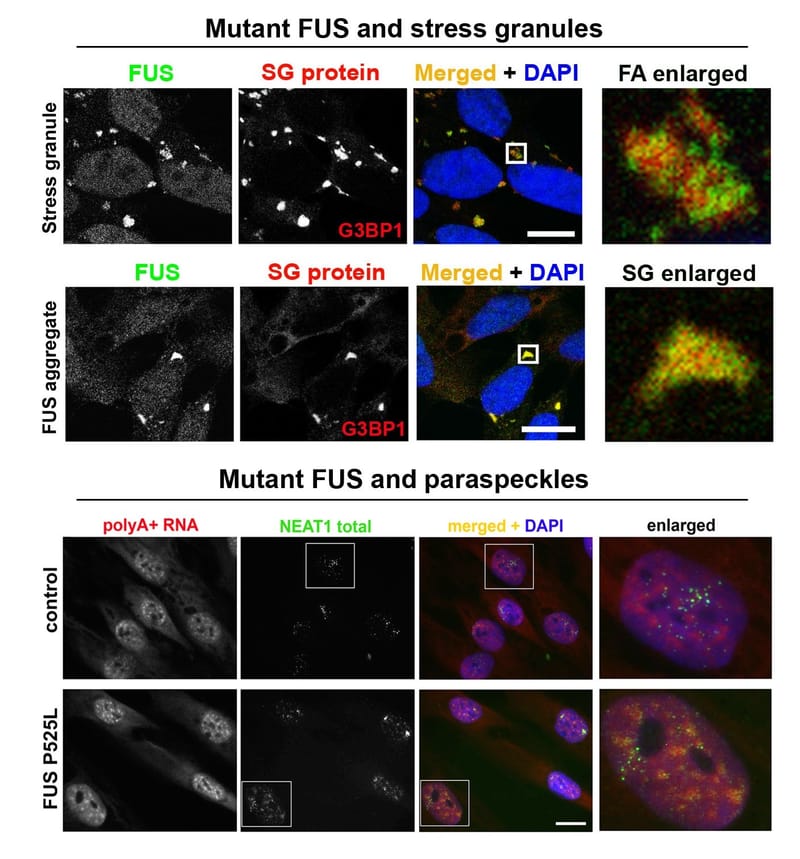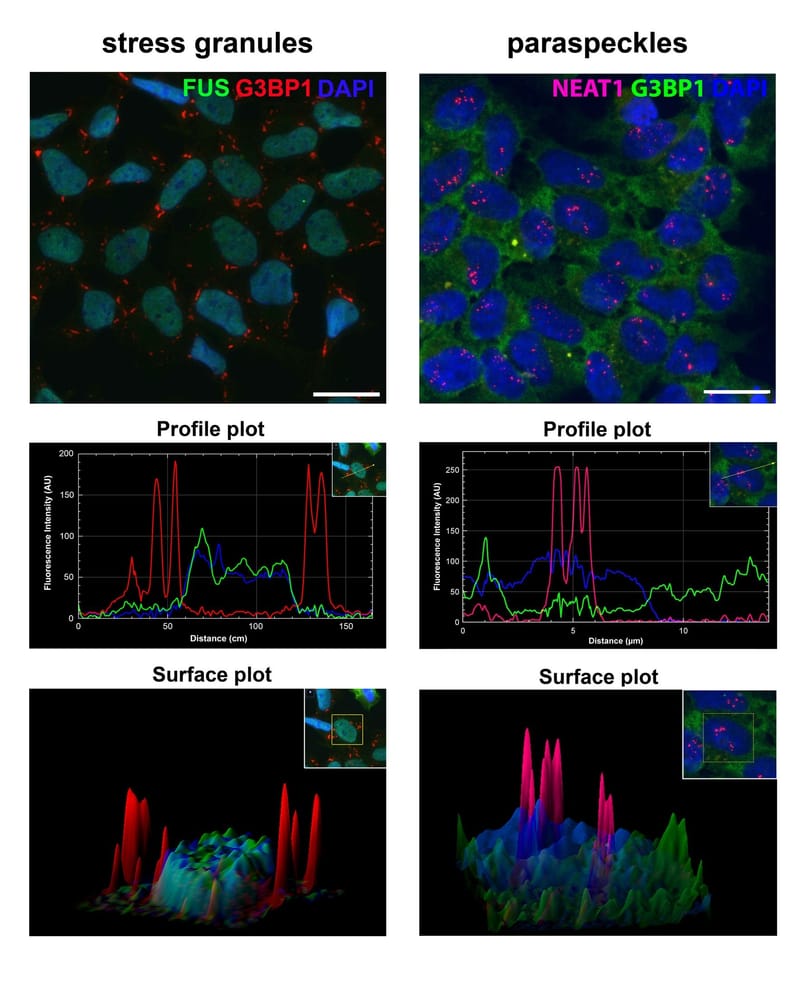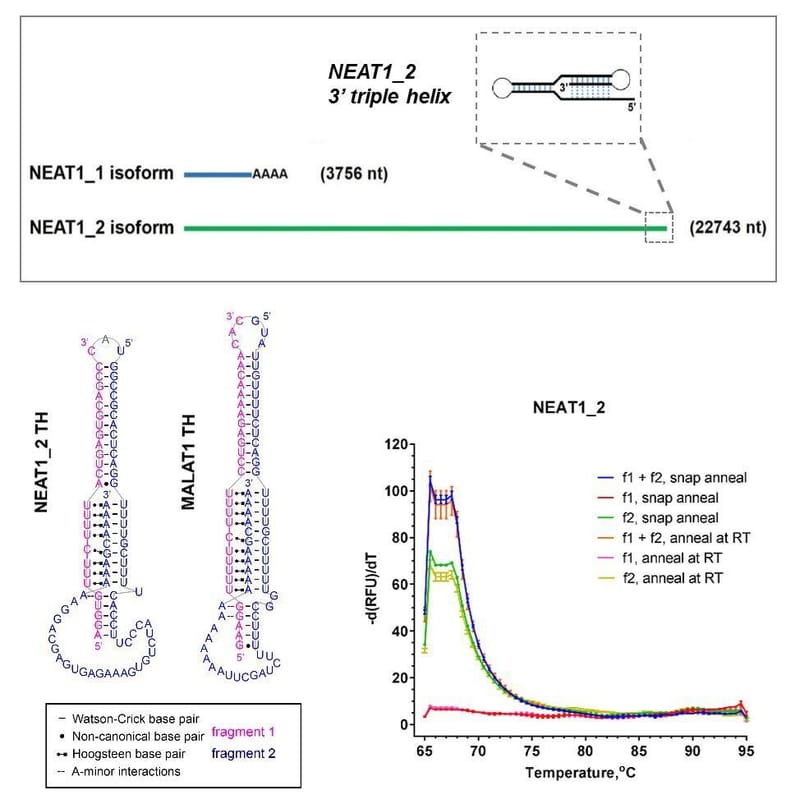Research Projects
Amyotrophic lateral sclerosis (ALS), the most common form of motor neuron disease, is a severe and inevitably fatal neuromuscular condition which currently has no cure. Disease-modifying therapies are urgently needed. To be able to find such therapies, we need better understanding of disease mechanisms, especially those applicable across different disease subtypes. Our research is focusing on the components of cellular RNA metabolism dysregulated in ALS, including lncRNA NEAT1 and RNA-binding proteins such as FUS and TDP-43.
Read MoreStress granules and paraspeckles are prototypical RNP granules localised in the nucleus and cytoplasm, respectively. Recently, we found that despite their spatial separation, these two RNP granules are intimately linked. Our aim is to dissect molecular mechanisms behind paraspeckle-stress granule crosstalk.
Read MoreMany RNA molecules represent attractive drug targets. However, RNAs are traditionally thought to be difficult to target using small molecules. It is now increasingly appreciated that despite linearity and limited structural complexity, most RNAs contain complex 3D motifs in their structure that can serve as platforms for small molecule binding. We are exploring the possibility of using small molecules for targeting of protein-coding and non-coding RNAs to expand the boundaries of the druggable genome.
Read More




